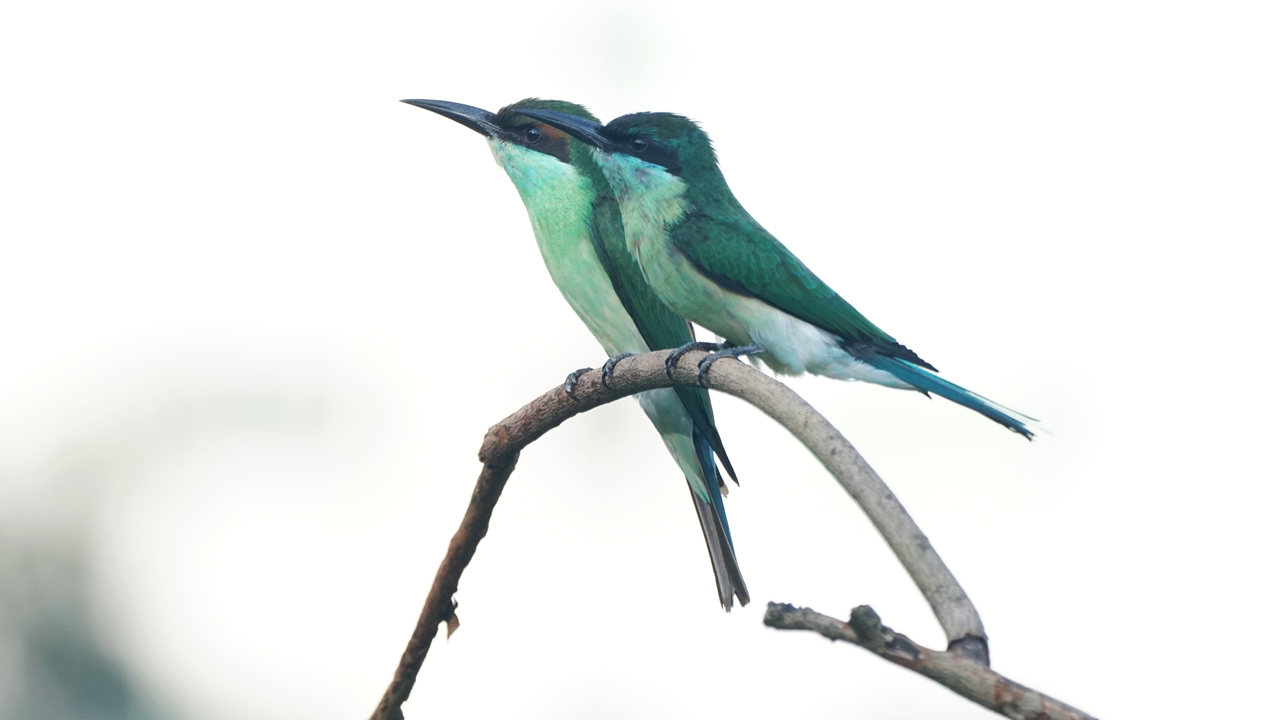SZ records 30 newly discovered wildlife species
Writer: Wang Jingli | Editor: Holly Wang | From: Shenzhen Daily | Updated: 2021-10-21

Two blue-throated bee-eaters spotted in Huanggang Park in Futian District on Oct. 2. Wang Haolan
Nearly 30 new animal and plant species were discovered in Shenzhen this year, including Chalcophaps indica (Asian emerald dove), blue-throated bee-eater, and Arisaema melanostomum (a kind of cobra lily). Many of these were discovered by residents, according to Shenzhen Evening News.
According to the latest data, Shenzhen has 585 species of terrestrial native wild vertebrates, 93 of which are national protected wild animals. Among them, 15 are first-class and 78 are second-class protected animals.
These species are mainly distributed in Shenzhen Bay and Wutong, Qiniang, Paiya, Maluan and Yangtai mountains.
Meanwhile, the city has roughly 2,080 types of wild vascular plants, including 16 types of national key protected plants, two national first-class protected plants and 33 categories of the national second-class protected plants, mainly located in areas such as Neilingding Island and Wutong, Qiniang and Tanglang mountains.
Shenzhen started background survey nearly 20 years ago and, in the beginning, species were discovered only by field visits and checks on historical materials. Given this, survey results were limited, thus posing great challenges to get figures, according to Tong Xuwen from Shenzhen Wildlife Protection Management Center.
Starting in 2013, the use of various technologies and more advanced tools such as infrared cameras have been helpful in increasing the survey’s accuracy.
Tong said Shenzhen has set up nature reserves to protect animals’ habitats. Shenzhen now has 25 nature reserves, four of which are national nature reserves.
In addition, Shenzhen issued two policies related to animal protection. After the outbreak of the pandemic, the city also issued regulations to completely outlaw wild animal consumption.
“In recent years, many project developers came to us to ask about the wildlife situation in areas they planned for development, such as the Ganzhou-Shenzhen High-speed Railway and Shenyang-Haikou Expressway projects,” said Tong, adding that “background survey can help in more targeted and effective animal protection.”
At the same time, nature education merited a high participation from the public in protecting the city’s wildlife.
On this year’s World Environment Day which fell on June 5, the local “Shenzhen Begonia” discovered by Shenzhen resident and veteran plant enthusiast Wang Xiaoyun was unveiled. This marked another species named after the city.
A total of 3,348 species were discovered by participating citizens during a local nature observation contest held from April 30 to May 9, according to the News report.